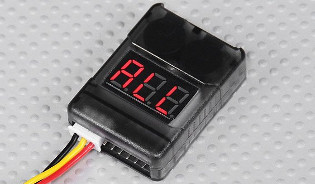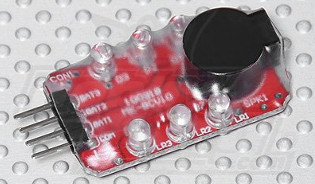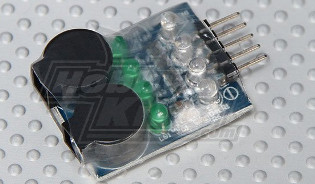Modern batteries: lithium-ion
After saying a word about NiCd batteries and their more or less interesting replacement by NiMH, let's now talk about modern batteries. All now use a lithium-ion (Li) based technology, in addition to a second element (thus the LiFe, LiPo etc variants). This second element is extremely important for the final characteristics of the battery. However, all these lithium-ion based batteries share common features: weight significantly lower than NiCd and NiMH (30% minimum at equivalent capacity), superior storage capacity (autonomy), superior discharge rate, low self-discharge, no lazy memory effect (for real, not like with NiMH), lifetime at least equal to the best NiCd (charge/discharge cycles). So many benefits, not counting that lithium-ion batteries do not use heavy metals or other environment lethal pollutants (which doesn't mean you don't have to recycle them properly).
However, this rosy picture hides drawbacks: higher cost than NiCd / NiMH, risk of fire and/or explosion, strict specific charge, storage and handling procedures to respect.
Last general consideration about lithium-ion batteries: today, every modern "mobile" and "portable" device is powered by this new type of batteries (cell phones, computers, pads, photo/video cameras, GPS, tools...). In short, about anything that can be recharged has a lithium-ion battery. But not only: you can also find them in electric or hybrid vehicles (and Formula 1 KERS), in planes, satellites etc...
Don't get excessively scared though: for these "everyday" usages, the batteries include security devices to avoid the risks of fire and/or explosion. Well, almost: sometimes, there are manufacturing defects (metallic particles in iThings, laptops batteries... that puffed or caught fire for which manufacturers had to make massive product recalls). Overall though, the technology is good and safe: just think about how many rechargeable devices you own, add 5 (for those you didn't think of), multiply by half the world population (supposing the other half can't afford them) and relate this to the number of battery problems you have ever heard of (that you can multiply by 10 because "they" hide things from us ^^). There: easy ![]()
Yeah, but... do our RC batteries offer this level of security? Well... no!
We will review this in detail when specifically speaking about LiFe and LiPo batteries.

lithium battery specifications (LiPo here)
With lithium batteries, new characteristics appeared:
 Cells and S
Cells and S
The equivalent of a NiCd/NiMH element (ou "battery") is called a cell with LiFe / LiPo (actually, it was also called "cell" with NiCd and NiMH). Each cell features a capacity in mah and a voltage (3.3V with LiFe, 3.7V with LiPo). A battery pack with 1 cell of 1100mah will be called 1S 1100mah for a voltage of 3.3V or 3.7V depending on the battery type. In our models, we use 2S battery packs, so 2 cells of 3.3V or 3.7V wired in series (thus the S) for a final voltage of 6.6V or 7.4V. In big scale flying RC, you can find 14S LiPo battery packs (that is 51.8V) or even more.
Then, you need to consider the internal cell layout in the battery. Let's take an example with a 2S 4000mah battery pack:
- 2 cells of 2000mah each in series => 2S1P
- 2 units wired in series of 2 cells of 1000mah each wired in parallel => 2S2P
In theory, a 2S1P type battery pack features higher discharge rate when a 2S2P type battery pack is better for autonomy. In concrete, no real difference can be seen: most of all, this is the manufacturer choice. It is so unimportant that you often can't find it in the pack specifications.
 Rate (or C)
Rate (or C)
The C means the charge/discharge rate of a lithium battery (LiFe and LiPo). In any case, 1C = capacity of the battery pack in ampere. So, for a 4000mah battery pack, the C equals to 4A (ampere). The manufacturer always specifies at least one C rate for the battery pack, sometimes two. The first C value is always the continuous battery discharge rate, which is the maximum continuous (or constant) current rate the battery can deliver. For example, a 30C 4000mah battery pack can provide 120A continuous (4A x 30C).
A second C value, always superior to the first one, can be specified by the manufacturer: it is the maximum peak intensity the battery pack can deliver. Caution: peak or "burst" means milliseconds (les than1-2 seconds). Sincerely, this value is nonsense (to say the least): in fact, it means that your battery pack is already providing its maximum and that it will briefly provide an even more violent current. Let's take again the example of a 30C 4000mah battery pack: a burst value "of marketing interest" would be a minimum of 45C or even 60C (the burst value is often twice the nominal C value) that is 180A or 240A(!). For your information: among the available plugs in RC, almost none can take 100A continuous without melting. In fact, we will talk about plugs later on.
So, due to the crazy optimism of most lithium battery manufacturers, consider a 40A 2000mah 2S 20C (nominal, not burst) is good for a standard Mabuchi 540 type motor. For a Sport Tuned and 25T motors, go for 60A, either a 2S 2000mah 30C or a 2S 3000mah 20C battery pack. For a 23T motor like the SuperStock, go for 80A (4000mah 20C or 3000mah 25 to 30C). With these values, you will stay far enough from the maximum capacity of the battery pack. Because, ignoring these characteristics can lead to very dangerous situations, as we will see further on.
 Softcase / Hardcase
Softcase / Hardcase
Either LiFe or LiPo, the cells are made out of a thick gel and an electrode (to make it simple) which are hermetically sealed into a thin soft membrane. It is the outer packaging enveloping the cells and wires that further makes the difference: softcase when everything is wrapped into a soft duct (economic), hardcase when everything is packed into a rigid plastic case (more expensive).
Hereafter, the exploded view of a LiPo battery pack found on Traxxasinternet website. Aside, a video in which Jang from Ultimate RC disassembles a hardcase LiPo pack: do not do this at home (or anywhere else). Jang perfectly knows what he is doing and he probably had the required security equipment at hand reach when he made that video. Again, this is only for information: don't burn your house down to ashes because of a bad handling!

© Traxxas
At equal volume (room), one of the softcase advantages, apart from the price, is that bigger cells can be used, thus more autonomy (mah) and/or a higher discharge rate (C). Other advantages: the lighter weight and a direct visual control over the state of the cells (puffing).
Major drawback: the only protection for the cells is the duct. Any hit will damage the cells. Any tear or hole in one cell membrane (pebbles for example) will at best lead to the cell destruction (LiFe), or worse, to an intense fire by reaction to the oxygen in the air (LiPo).
Something else to consider: during the discharge (when using them), the cells slightly expand. This is normal and must not be prevented: after 1 to 2 hour(s), the cells will regain their normal volume.
Two consequences:
- a battery pack must never be compressed/forced into the chassis tray: possibly, you can use foam to better wedge it. The battery tray needs to leave room enough to let the battery pack "breathe" on all its surface. in particular with frame chassis like the M-03 or TL-01 in which the battery pack is located transversally to the chassis, the battery pack expansion needs to be possible also in the middle of the chassis frame. Otherwise, the cells will get damaged.
- never recharge a battery pack right after using it: always wait 1 to 2 hours so that the cells regain their normal volume. Same thing right after charging the battery pack, wait 30 to 60 minutes for the same reasons: even though the charging voltage is below the discharge voltage in use, the cell expansion still occurs (at a much lower scale though).
Softcase or hardcase? Be honest: neither the few case grams or the bits of mah or C will have the slightest influence over performance, especially since differences are made by the driving skills. It is only about choosing between the security of the visual control of the cells condition and the security of the case. My opinion is that the risk of damaging the cells is too serious to consider the softcase.
 Cut-off
Cut-off
The cut-off feature is a value to set into the ESC or on an external alarm device. As soon as the battery pack receives current calls making its overall voltage drop below the set value, the device cuts the power and/or beeps. This cut-off value is always set per cell, whatever the number of cells of the battery pack.
You definitely need a cut-off or alert system: if the voltage drops below a determined value, the cell will definitely get damaged. It will start to puff and then catch fire in extreme circumstances (only LiPo).
You also need to know that discharge is not balanced between cells: on a 2S pack, one cell can drop to 3.3V when the other cell has already dropped to 3.0V. Hence the required use of an ESC built-in cut-off or an external alarm device monitoring each cell voltage in order to cut or beep once one cell reaches the target alarm value.
Examples of external alarm devices called Lipoly Low Voltage Alarm, Low Voltage Alarm, LVC, buzzer or cell checker:
Cell Checker with Low Voltage Alarm

On Board Lipoly Low Voltage Alarm

On Board Lipoly Low Voltage Alarm

According to the device, they can be pre-set for an alarm at 3.3V / cell, perfect for LiPo, but too high for LiFe (you should target 3.0V / cell). As the first photo shows, it is the small balance plug of the LiFe/LiPo battery pack that connects to the device to monitor the voltage. When using the ESC built-in cut-off, this plug is not used since the monitoring is performed through the battery pack plug.
Warning!
For LiFe batteries, the cut-of value is 3.0V / cell:
for a LiPo cell, this value means DESTRUCTION! hence FIRE! eventually
On every Tamiya ESC featuring a cut-off, it is a LiFe cut-off at 3.0V / cell.
=> NEVER use the cut-off feature on Tamiya ESC when using LiPo battery packs..
How comes Tamiya is the only one manufacturer (that I know) setting a LiFe cut-off instead of a LiPo cut-off since LiPo is more widely used in RC? To my knowledge, Tamiya never said why. However, all manufacturers chose LiPo, probably because the 2S voltage is closer to the "standard" NiCd and NiMH voltage than the 6.6V LiFe voltage. And of course, because of performance due to the higher voltage.
However, my guess is that Tamiya's main concern is their customers security: a non insignificant part of RC users are kids and beginners who are more concerned about pleasure than racing performance. Tamiya would have made the choice of security with LiFe which is far less dangerous than LiPo in case of misuse (no risk of fire), even if that meant going against the stream of the RC industry. Perversely, their decision means you must not trust Tamiya's ESC cut-off if you use LiPo batteries because it would turn into a serious security issue. For those who would prefer to use LiFe batteries, the market offer is extremely rare, almost inexistent apart from Tamiya's battery packs.
Related article




